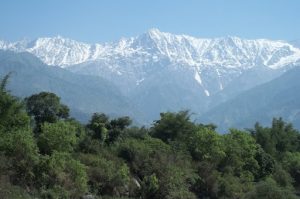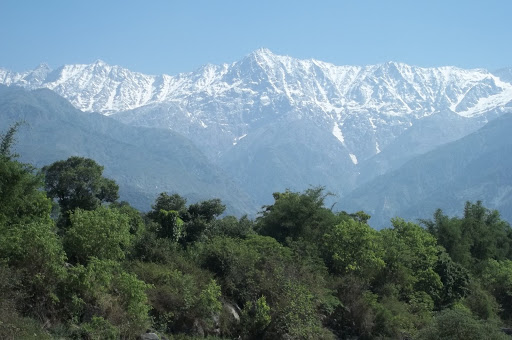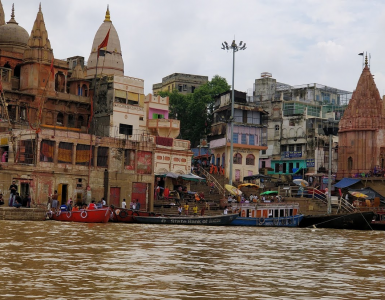With humans locked inside their houses, owing to the COVID-19 outbreak across the world, nature has decided to venture into open areas. With the industries shut down, people & vehicles off the road, and planes grounded, the world is opening up to see so much more. As if a veil has come off and the natural splendor is for all of us to cherish. The impact of lockdown on the environment is just simply amazing.
Below is a quick compilation of a few special visual delights that we have got an opportunity to witness due to the ongoing lockdown.
The positive impact of lockdown on the environment during Lockdown
Dolphins making a Splash
Venice is one of the top international tourist destinations which are always buzzing with tourists. Taking the boat ride on the narrow water canals is one activity that every visitor loves to take. Suddenly with all the boats stopped due to lockdown, people started to see Dolphins and swans playing near the shores.
Thought I’d spread abit of positivity for you guys. Since the lockdown of Venice without the pollution from boats the water has been begun to clear up and a dolphin has been spotted in the canal for the first time in nearly 60 years! #venice pic.twitter.com/dbq4mGhfnp
— Jack (@NotLacazette) March 17, 2020
Snow-capped peaks of Gangotri
The latest on the list is Saharanpur, a region named after a Sufi Saint Shah Haroon Chishti in the state of Uttar Pradesh. The aerial distance between Saharanpur and the snow-capped peaks of Gangotri is about 200 km, but that becomes irrelevant when the air is pure and eyes are waiting (with a camera of course). On the 29th of April, Indian Forest Services (IFS) officer shared captivating photos of the enchanting Himalaya on his Twitter handle. Many residents of the city were able to capture the beautiful sight.
Snow capped peaks of Himalaya are now visible from Saharnpur !
Lockdown and intermittent rains have significantly improved the AQI. These pictures were taken by Dushyant, an Income Tax inspector, from his house at Vasant Vihar colony on Monday evening. #lockdowneffect #nature pic.twitter.com/1vFfJqr05J— Ramesh Pandey (@rameshpandeyifs) April 29, 2020
Magnificient pink flamingos
Out of the six flamingo species found in the world, the greater flamingo (taller, with a black-tipped pink bill) and the near-threatened lesser flamingo (shorter, with a dark crimson bill) are found in India. Every year between the months of October and March, these pink-colored creatures arrive in Mumbai from the northwest part of India.
A census by the Bombay Natural History Society estimates a 25% increase in the migration of flamingoes to the Mumbai Metropolitan Region’s wetlands. This year, over 1.5 lakh birds were spotted in the first week of April itself compare to 1.2 lakhs in 2019.
#WATCH Maharashtra: A large number of migratory Flamingo birds seen at the creek in Navi Mumbai. pic.twitter.com/2FT0D0WXcW
— ANI (@ANI) April 18, 2020
Endangered Turtles
More than 8 lakh endangered Olive Ridley turtles have returned to the coast of Odisha for mass nesting after making no appearance last year. According to forest experts, nearly 50 percent of the world’s population of these rare turtles come to Odisha’s coast for nesting. A development that was hampered over the past several years because of the litter, waste, fishing boats, ships, and unhindered human movement.
The coastline in Odisha is now witnessing the arrival of lakhs of Olive Ridleys. These rare sea turtles are renowned for their mass nesting and these areas are their largest nesting site in the region.
The lockdown has now ensured no disturbances for the Olive Ridley Turtles #Odisha pic.twitter.com/ICj9xVJTwY
— Soumyajit Pattnaik (@soumyajitt) March 25, 2020
Peeping Himalaya’s

Jalandhar is an ancient city in the north Indian state of Punjab. For about the last 30 years, people know this city as home to Devi Talab Mandir, a centuries-old Hindu temple dedicated to the goddess Durga. This year we will also know the place where you can see the Himalayan range.
Industrial and other greenhouse gases taking a backseat, the Dhauladhar mountain range, which is more than 100 miles away from the city – made a spectacular appearance for the inhabitants. April 3rd, 2020, would be a special day for people in the surrounding area, the sight which was not seen from the last so many years was there in front of their eyes.
https://twitter.com/harbhajan_singh/status/1245992859263594497
Behold the lovely clean waters
With no humankind to bother, throw garbage, or emit pollutants, the water bodies are for a clean surprise. The impact of lockdown on the environment, our rivers, and water bodies is spectacular. The Yamuna in Delhi, Upper Lake In Bhopal, Sabarmati river in Ahemdabad, river Gomti in Lucknow, Sankey lake in Bengaluru, and Sukhan lake in Chandigarh all look super stunning, clean, and green.
India Today sent drones into the sky to film urban water bodies under #lockdown. Rivers and lakes in our cities are looking stunning. Yes, even the Yamuna. Take a look .#naturetakesover #COVID pic.twitter.com/TlgXCsp0Dj
— Ramesh Tiwari (@RameshtJourno) April 19, 2020
The Ganges is Holy again
What money couldn’t do in the last so many years, a simple lockdown has done in a few days. The water quality of river Ganga at Har-ki-Pauri in Haridwar has been supposedly classified as fit for drinking. After being tested for various parameters, the experts have mentioned that the quality of water is significantly better.
Conclusion
Finally, with only a few days of lockdown, we have so much to experience and marvel at. Moreover, if you want to believe the ecologists, they opine that giving nature space could help curb future disease outbreaks.
The rest is up to you, what choice you want to make.






Add comment